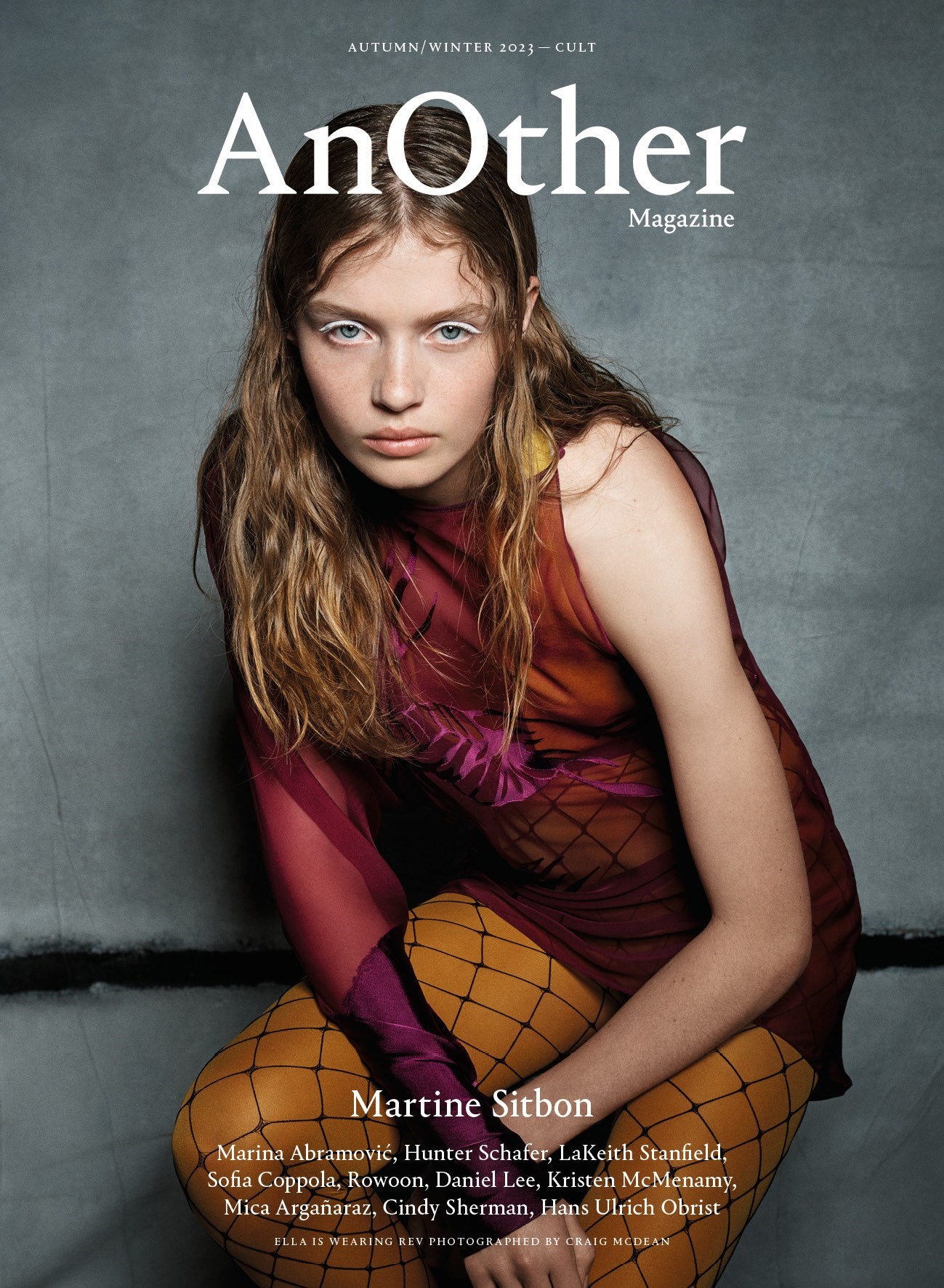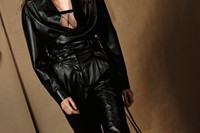This article is taken from the Autumn/Winter 2023 issue of AnOther Magazine:
Fashion’s obsession with the Nineties endures: the spectres of early Prada, Helmut Lang and Martin Margiela cast long shadows. Less well known and, certainly, written about, though familiar to any self-respecting designer or stylist, is Martine Sitbon. Working under her own name from 1986 to 2004, and then the creative force behind the label Rue du Mail (2006 to 2013), Sitbon was also the designer of Chloé for four and a half years from 1988, following Karl Lagerfeld’s famous tenure there. He would pick up the reins again for a short time after her departure, and before Stella McCartney and Phoebe Philo arrived on the scene. With typical grandeur, Lagerfeld himself named Sitbon “the only living French designer”. “Yes, I remember, that was nice of him,” Sitbon says now. Her work is some of the most referenced of the age. As are the accompanying catalogues, art directed by her partner in life, Marc Ascoli and then M/M Paris, shot by Nick Knight, David Sims and Craig McDean on Stella Tennant, Kirsten Owen, Shalom Harlow, Helena Christensen, Kate Moss, Guinevere van Seenus, Kristen McMenamy, Amber Valletta, Karen Elson and, for Chloé, Linda Evangelista, Christy Turlington and Claudia Schiffer.
It’s a decade since Sitbon last graced the Paris schedule. The word is used advisedly. She is gracious, graceful, cultured and sophisticated, a much-loved fixture in Paris fashion circles. She shuttered her eponymous label in 2004 due to financial difficulties and, around the same time, lost commercial use of her name. Somewhere across the globe, even now, there are trainers branded with it. But it’s clear from the tilt of her small and perfectly formed nose that she’s none too enamoured of them. Martine Sitbon doesn’t do trainers.
Sitbon’s second fashion incarnation, launched in 2006, was called Rue du Mail, after its headquarters in Paris’s second arrondissement. The name may have changed, but Sitbon’s signature remained – skinny, streamlined tailoring, lean dresses cut easily around the body, all in off colours and unexpected materials. Sitbon produced 14 collections for Rue du Mail between 2006 and 2013 – as with all her endeavours, each seemed a translation of her own, often-imitated but ultimately inimitable attitude with cloth.
The same was true for the Autumn/Winter 2023 season when Sitbon returned to the runway with Rev, a new label created in collaboration with the entrepreneurs Arik and Laurent Bitton, who sold their fashion business, Iro, in 2019. Given the two cut their teeth the very decade Sitbon rose to fame, it’s small wonder that hers was the name at the top of their wish list for future ventures.
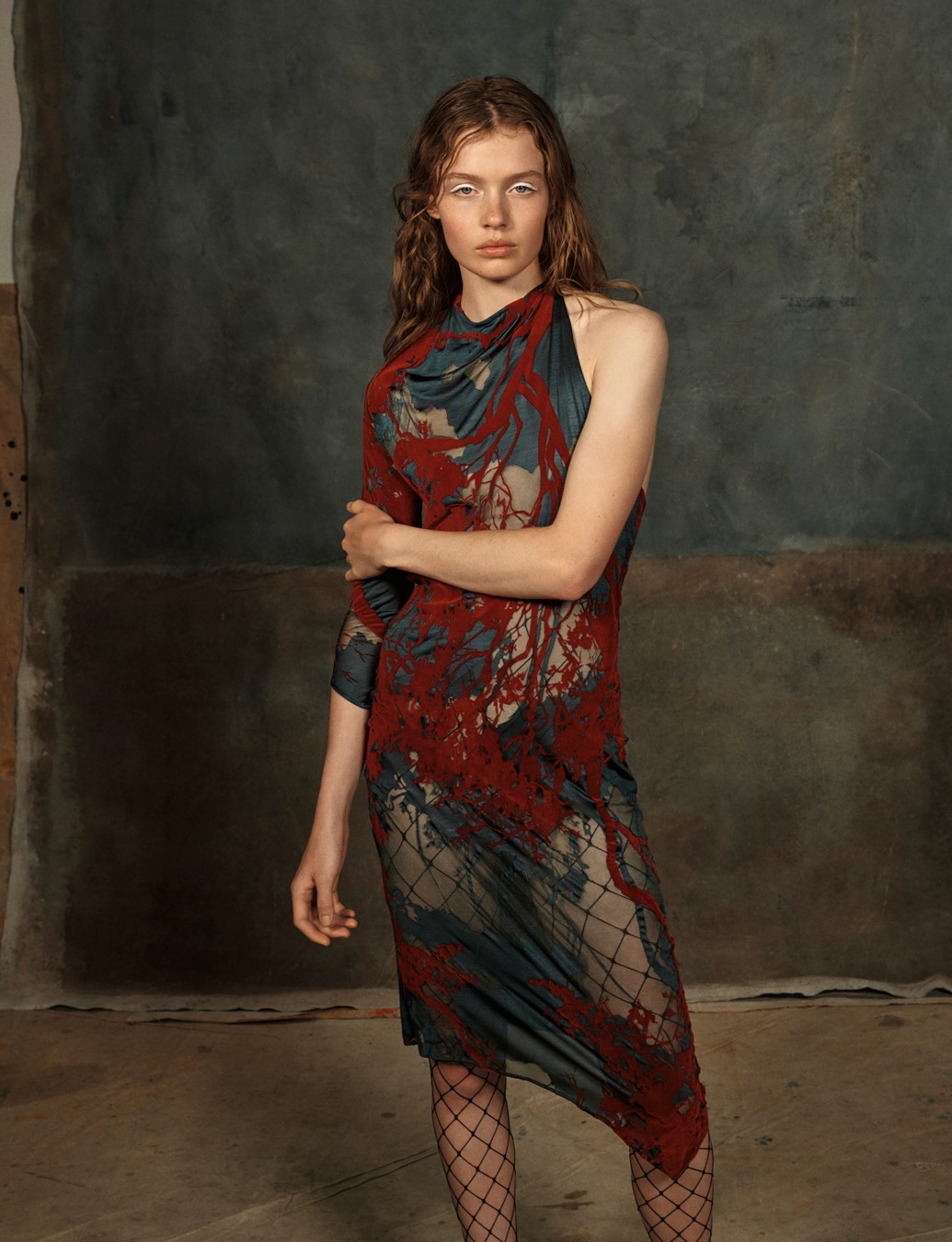
Rev launched with a series of presentations in the French capital in February – there were originally meant to be three of them, but due to attendance levels that number doubled. It draws on Sitbon’s expansive and ever-influential archive, an apparently inexhaustible wellspring of ideas ripe to be re-examined by the originator herself. And, unlike many other designers and brands, it does so openly and honestly – it’s even built into the name. Rev, after all, could refer to revival, revisit or just revive. Or, perhaps, revolution, which is what Sitbon’s clothes represented to many women’s wardrobes first time around. Revamped and revisualised for a more direct and accessible era, here were the asymmetric devoré velvet dresses that made women happy way back when there was the killer tailoring to wear with or without it, all in a distinct and intensely studied palette or, as Sitbon puts it: “colour for people who love black”. The aesthetic lies somewhere between classic French elegance and flea market finds, between the romance of mid-20th century haute couture and the Seventies peacock male, between vintage Yves Saint Laurent and the Velvet Underground and Nico. Sitbon’s work is located in the space between dreams and reality, in the ephemeral beauty of the moment just before a young girl becomes a woman and resonant of the confidence that grows as she does. Perhaps inevitably, that reflects the designer’s own life. Born in Casablanca, moving for a short time to Rome, she landed in Paris as a rebellious teenager where, “a little lost”, she enrolled at the small (at the time) but prestigious Studio Berçot to study fashion. She never looked back: Martine Sitbon had found her metier.
We meet in London the day before this cover story was shot by Craig McDean, with creative direction by Marc Ascoli and featuring Rev alongside Sitbon’s own archive designs. Martine Sitbon, named by the French government Chevalier des Arts et des Lettres in 1997 and Chevalier de l’Ordre National du Mérite in 2012, shares a glimpse of her story.
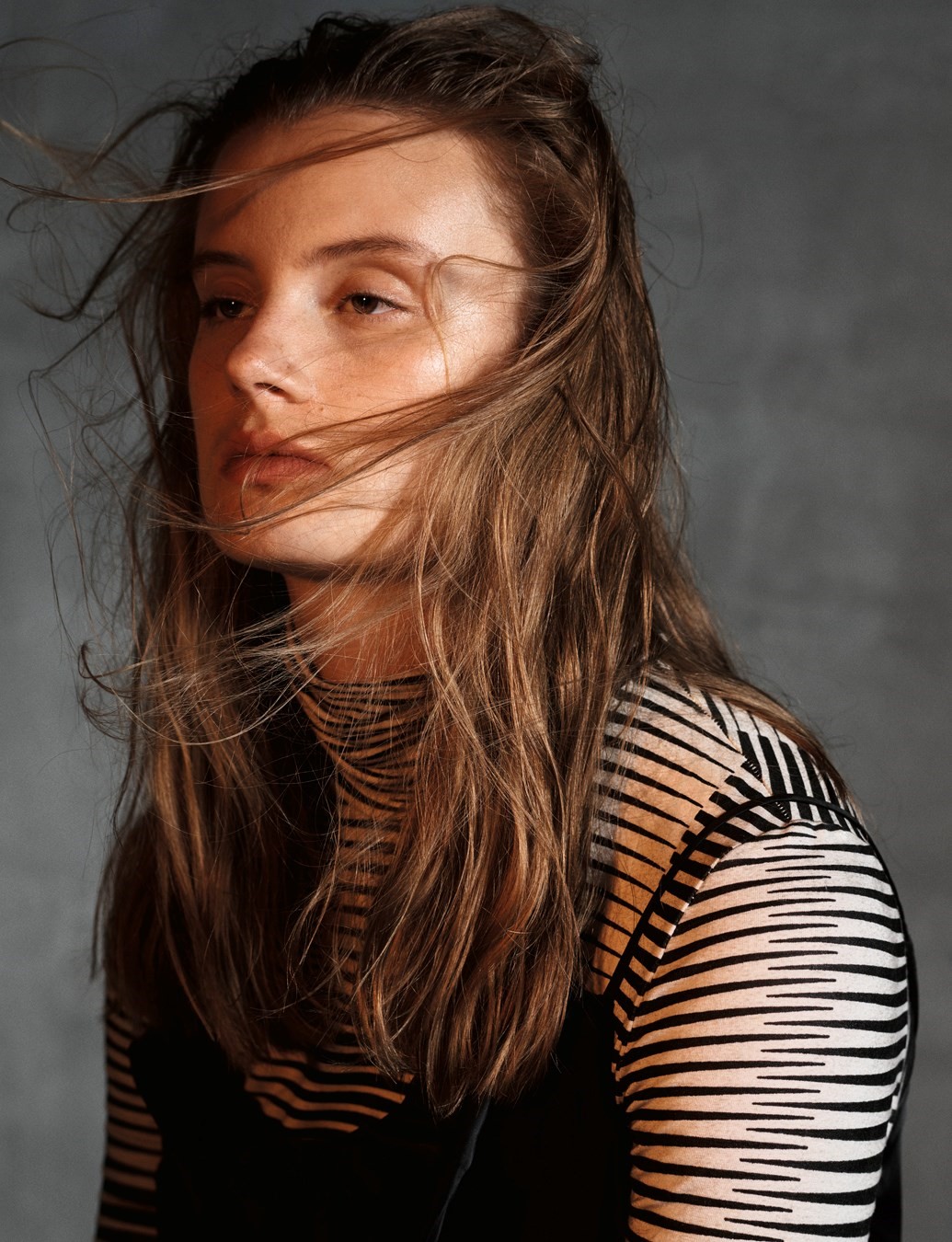
Susannah Frankel: Why did you decide to do Rev?
Martine Sitbon: Arik and Laurent were talking to their adviser about what they wanted to do having sold Iro and they said that they were really interested in working with Martine Sitbon. That adviser happened to be a very close friend of Marc’s brother, so he said, “I have her number. I’ll call her.” Et voilà.
SF: I’m sure it was a little more protracted than that.
MS: I was honestly not thinking about doing a collection. I spent 30 years of my life doing it, you know. The idea was that it comes from my designs, and that their design team would then translate them into something less complicated, something for now. We chose the archive pieces to work on together, I let them have their choices and, of course, I was there to advise. Sometimes the designs are very close to the originals, revisited in a more modern way, more simple, more direct. Martine Sitbon was not simple or direct.
SF: Was it a happy process for you?
MS: What I like about it is that it’s totally different from the way I have always worked. I’m a Gemini, I like change. I appreciate that they have a whole design team to work with. And I go for fittings. It’s a fresh approach for me. Back then, it was my whole life, everything I wanted to say in life was in my collections. My collections were an expression of myself, very close and personal to me. And that was also true of the research. Aesthetically, every film I saw, every exhibition I went to was research for the collection, the prints, the fabrics, the music, the models.
SF: I always think there is a lightness to Martine Sitbon – to the physical garments – that belies the work that went into making them.
MS: It was always about storytelling, I think. I was telling my story through colour, through fabrication, through silhouette. I always wanted it to look easy – real – but it’s not actually at all easy to do a devoré jersey with a flock velvet print on top. For the red latex dress you see in these pictures we found a manufacturer in Brazil. Everyone else thought I was crazy. The rubber was combed by hand. That latex was insane.

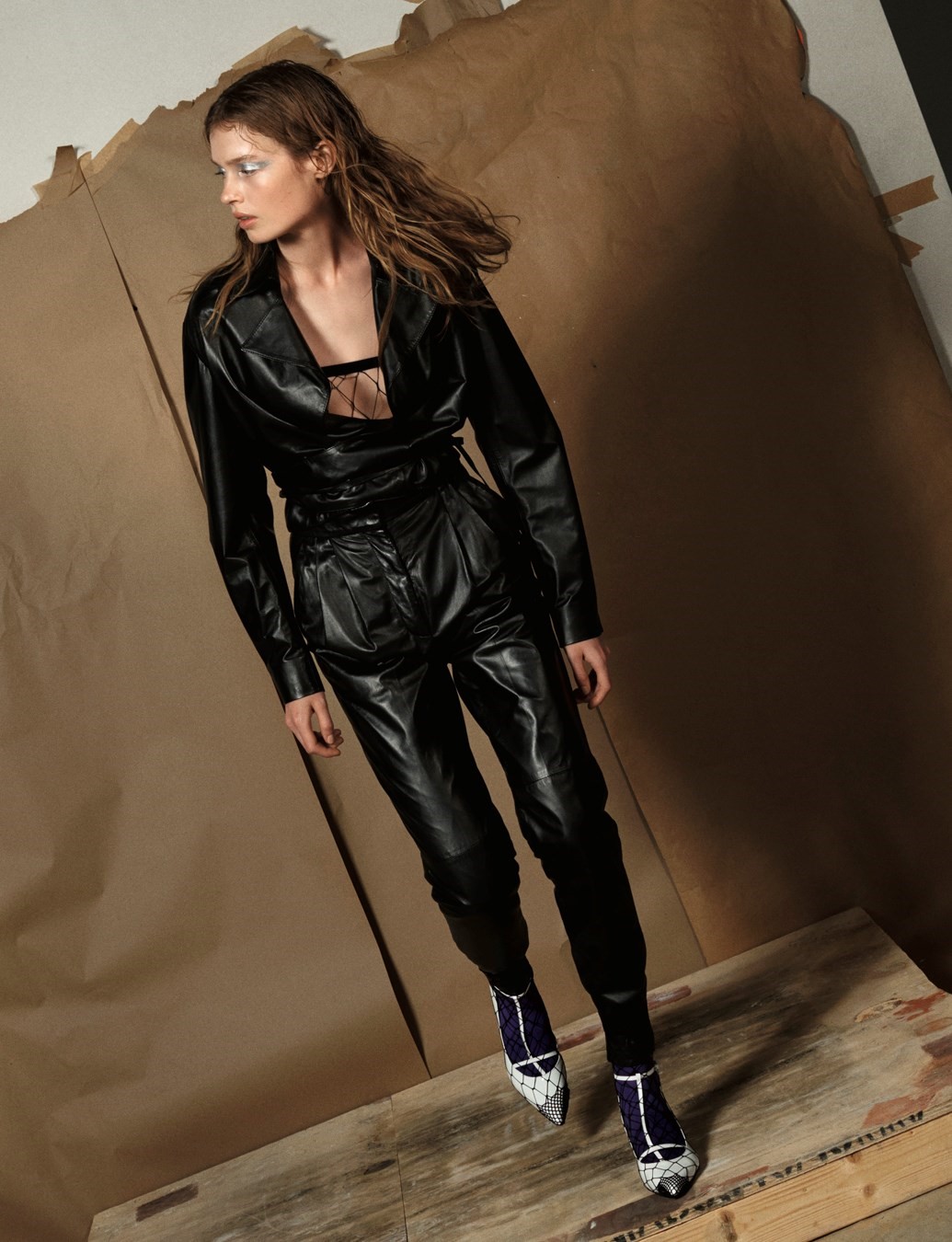
SF: Do you miss that level of complexity?
MS: Not at all. I loved doing Rev and the opportunity for me to go back to my work without going back in time, which would be a bore, to review it through eyes other than my own. I think that’s exciting. We pick the pieces from the many collections that we think are interesting and relevant for today – it’s more like working as a stylist, as an editor, and I really like that.
SF: Can we go back now, to Martine Sitbon? In the first place, I think, it always came from an idea of a woman. It felt instinctive but always based around the women you were inspired by, spent time with and also, of course, by you yourself.
MS: At the beginning the girl was very cute, then she became tough. But, yes, it was all about the woman, about different women. I liked models very much. You can see that in my work. Kate Moss, Shalom Harlow, Kirsten Owen, they were very important to me. That wasn’t always the case with the designers at that time, they didn’t focus as much attention on the girls. Margiela with the mask, McQueen, it wasn’t about the models. But I loved them because for me that’s what gave life to my work. I like clothes to be simple, to be twisted, but simple. I don’t do this [She makes a big, bulbous shape with her hands, laughing.]. I liked the woman to look interesting and for her to feel good in the clothes.
“It was about people who had the same taste, liked the same things. We wanted to change things. Not just things in fashion, in politics almost, in the world” – Martine Sitbon
SF: You were a community, in a way, before that became a buzzword.
MS: It was about people who had the same taste, liked the same things. We wanted to change things. Not just things in fashion, in politics almost, in the world.
SF: What things did you like?
MS: We were very into Yohji, Comme des Garçons. Marc was the PR for Yohji and we had a big apartment, very big, and the Yohji collection was there. I lived with it. Everyone was copying it at the time. But I didn’t want to copy Yohji. That would have been embarrassing for me and for Marc. So I went the opposite way. Also, I had this fantasy from having studied fashion at Studio Berçot. At that time, it was very fancy, very French, sort of surreal, funny. It was different. It was not only black and dark, it was colourful. It was very Le Palace. It was not a formal fashion education. I still see my teacher, Marie Rucki. I saw her a few days ago. She’s maybe 86. She’s fantastic. She’s so world of fashion, so intelligent, very Parisian. She knows haute couture and all those things, but not in a classic way. She was always very open-minded. She had an extraordinary way of teaching, very broad, through the history of costumes, the magazines. And not just through fashion, through art exhibitions, even literature.
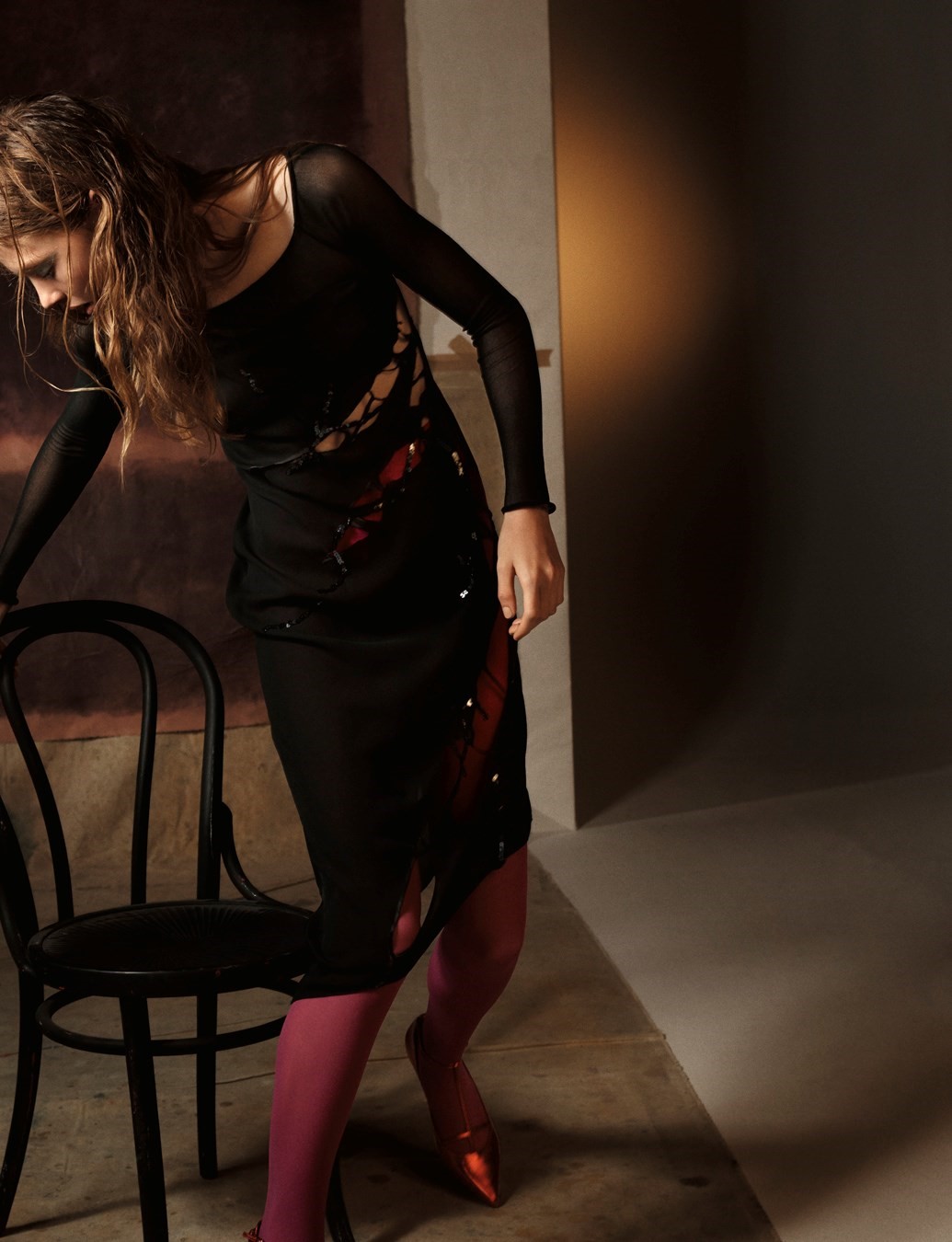
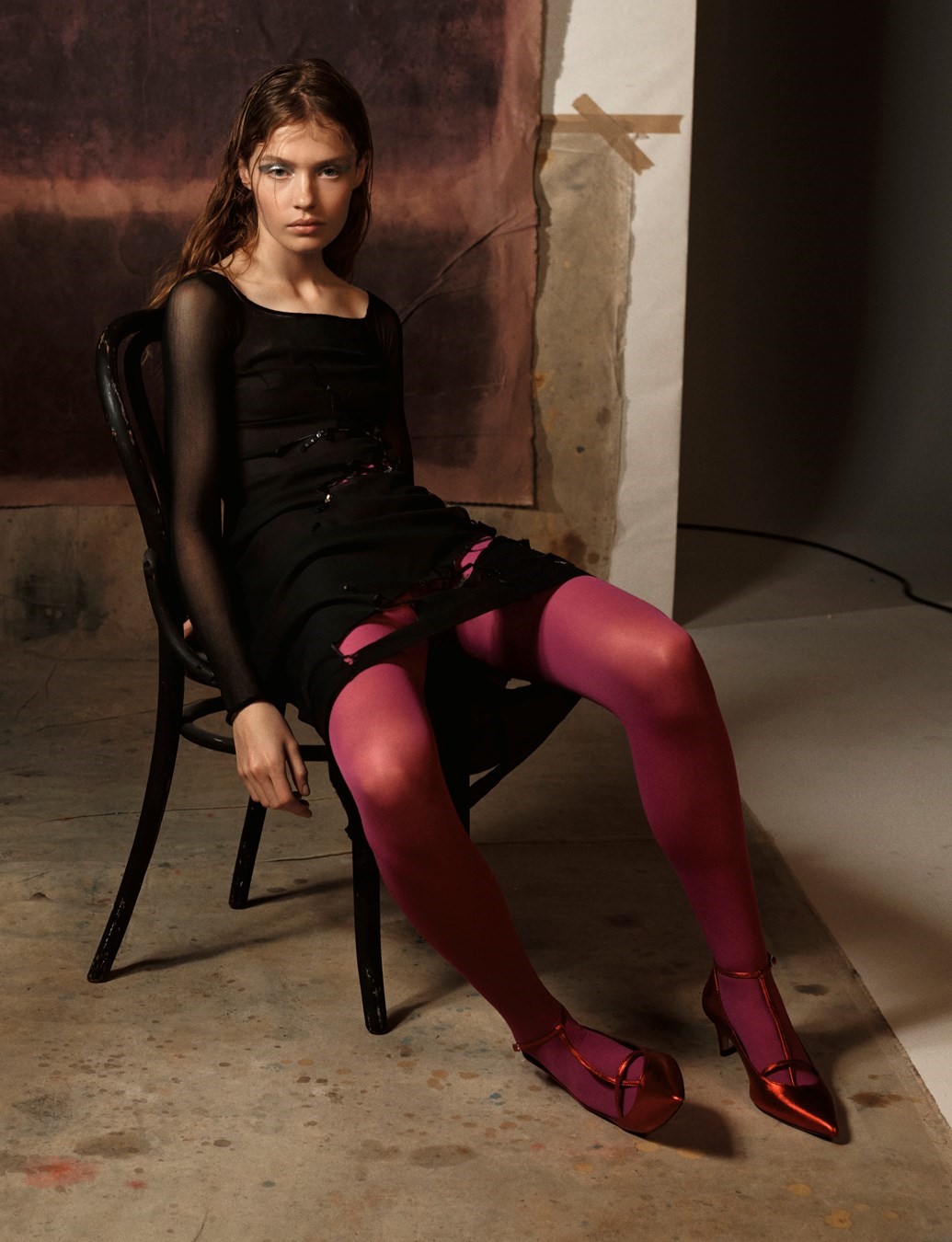
SF: One of the first things I remember about your collections is the image of Kristen McMenamy in wings.
MS: The little fairies, the wings. That was one of her first shows. It was not all about fairies. It was real. The clothes were wearable but surreal too, surprising. It was still something that people who liked Yohji could wear because the taste level was the same, but the aesthetic was totally different. I used a lot of colours, but they were colours specifically made for people who loved black. Maybe it was closer to the English. When I was younger, I came to England a lot. Like every girl. I was 13 years old, and I came to live with families to learn English. Obviously I never did what my family expected or wanted me to do. I went to concerts, to flea markets. I was very inspired by that, by dresses from the Thirties, Forties and Fifties and by military jackets. At the start, for Martine Sitbon, I looked at Seventies men’s tailoring, at a low waistline and narrow shoulders, but all constructed following the traditional methods. It was the mid-Eighties, it looked very different to what everyone else was doing. That was the time of high waists and certainly not narrow shoulders. I also loved Biba, I loved Ossie Clark. I was more from that place.
SF: You had only been showing Martine Sitbon for two years – just four seasons – when, in 1988, you went to Chloé.
MS: Martine Sitbon was successful very quickly. My shows had big people attending. A headhunter came to talk to me about Chloé. I was so excited because I thought of Karl Lagerfeld and what he used to do there in the Seventies. I was so happy. But when I got there it was a disaster. It was not 1977, there was no Antonio Lopez, Donna Jordan. They’d had a mixture of designers, some of them talented, but it didn’t work. And I freaked out because I thought, “Oh my God, I’m just starting out, I’m going to ruin my story.” I got scared. I signed for six months and thought, “After six months I’ll run away.” In the end, there was a new CEO. Everyone else left and I stayed for the next four years.
SF: How would you say your work at Chloé was different?
MS: By that point, the women in Martine Sitbon were cooler. I did the opposite at Chloé. It was at a moment when couture had become interesting again. Montana was at Lanvin and Chloé was very, very expensive, very luxury. And there were the embroiderers. François Lesage, I did the embroideries with him, in his studio. The know-how of the pattern makers in the Chloé ateliers was incredible. I worked closely with the première flou, an old lady who was trained by Christian Dior himself. I always liked the couture aspect just as much as I liked street fashion. I like when many different things live alongside each other, many contrasting things. So what I did with Chloé was very couture, not like my collection at all.
SF: Music has always been part of your world – the Velvet Underground and Nico, early Bowie.
MS: I was very young, maybe 12, when I connected to music. I was in France. And I would listen to English and American music in bed, under the covers. Now it’s called rock music but back then it was just pop. It changed my life. Perhaps, like any adolescent, I was not very happy. I liked to have fun with my friends but I was not happy at school. I was rebellious, in a quiet way but still. Music was my escape. That’s where I got my inspiration. First from the Seventies, then the Eighties – Prince, I did all the frills. And obviously, later, grunge – Seattle, Pixies, Nirvana.

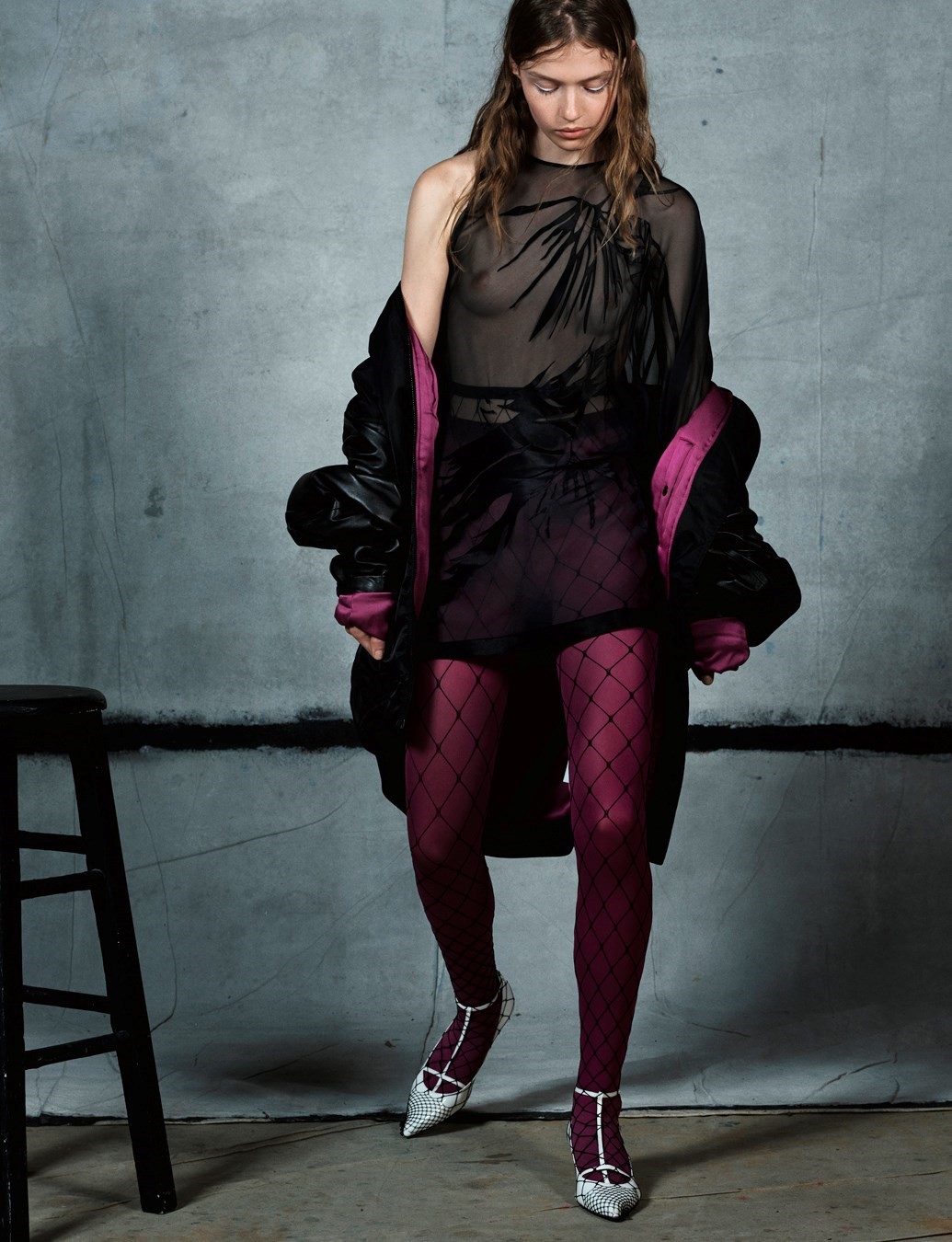
SF: How did you end up at Studio Berçot?
MS: I left school and my family was not happy about that. My family is intelligent, a bit intellectual. They wanted me to succeed in life. My sisters were both academic. My mother was afraid I wouldn’t do anything with my life, that I’d go to London and they’d never see me again. I was a little wild. She knew the people at the Saint Laurent store in rue Faubourg, she wore Rive Gauche. She took me there to see if they would hire me. I arrived, with my look, and I can tell you that they didn’t for one minute consider hiring me. My mother had bought me a tailleur – the suit, the belt, everything – but I had fishnet tights on and make-up. So my big sister, who is now a psychoanalyst, she knew I liked to draw – I drew clothes, faces and make-up. She saw an ad for Studio Berçot and she said to my mother, “You have to take her to see them.” I met Marie Rucki, I loved her, I started straight away and from that second on I was totally into fashion. I was on my path.
SF: Now fashion is fashionable, in a way, everyone knows about it, everyone wants to do it – on every level it’s more accessible. But then it wouldn’t necessarily have been an obvious choice.
MS: Exactly. I was always interested in fashion but I didn’t think I could do it as a job. I wasn’t like Jean Paul [Gaultier], very young, dressing his teddy bears, it was never my dream. But I did like to dress myself and that’s why I think when I did fashion I was a lot like a stylist. It was that thing of expressing the mood around you.
“Later [my collections] became more feminine in a way, like a young woman. It’s funny. It was as if it were growing up alongside me. I didn’t think about it like that at the time but, looking back, it’s my life” – Martine Sitbon
SF: Can we talk a little bit about your childhood?
MS: I was born in Morocco. My mother was Italian. My father was French but born in Tunisia. We moved to Rome when I was 10 or 11. But I am Parisian. I don’t even really remember Casablanca. For me it was not like the movie Casablanca. It was a modern city. I remember the beaches. I remember the swimming pools. I was a baby. We lived for two years in Rome. I liked it very much. My big sisters were 15 and 20. I saw la dolce vita through their eyes – they had Italian boyfriends, of course.
SF: How much of your taste do you think comes from your experience in life?
MS: I think it’s instinctive. I never worked on it. But talking with my sister not so long ago, she said it came from my mother. I was reactionary but at the same time ... In Morocco she was young, beautiful and elegant. She often wore couture. My father was 15 years older. Then, in Paris and Rome, she worked. I remember my mother in Paris, she wore Levi’s, a Courrèges rib-knit sweater, penny loafers. When it was raining, she wore a Burberry trench coat and hat. I always did a trench coat in my collections and that came from her. She had good taste. She loved Delphine Seyrig. She had a voice a little like that. A very low voice. She loved Jean Seberg. Once, when we were in Morocco, we all had Jean Seberg cuts – my two sisters, my mother and even me. She had an eye that was not bourgeois and classic. Both my parents loved cinema. Godard, Fellini, Alain Resnais. They were cultured.
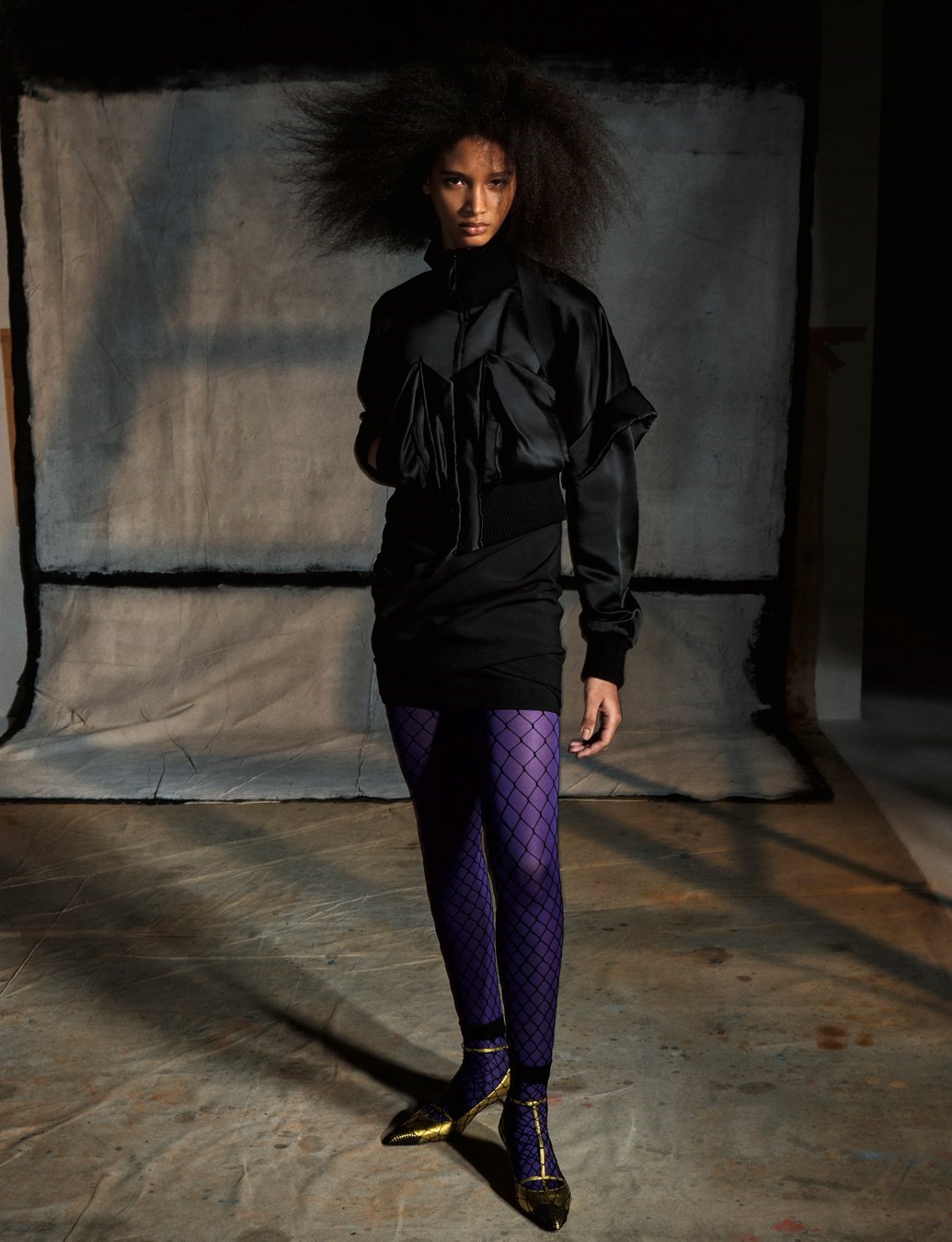
SF: I can see now that Martine Sitbon was, in some ways, about you growing up. The woman starts out childlike and grows stronger, more real maybe.
MS: I didn’t do that on purpose, it was more organic than that. But when I see my first collections it was like my childhood, sweet, naive. And then the tougher ones – that was adolescence, the reaction, the woman was strong. Later it became more feminine in a way, like a young woman. It’s funny. It was as if it were growing up alongside me. I didn’t think about it like that at the time but, looking back, it’s my life.
SF: And now?
MS: I’m not a childlike woman. I’m certainly not like that. Perhaps I’m an old teenager. Perhaps that’s a bit of a problem. That never changed so much.
Hair: Eugene Souleiman at Streeters. Make-up: Lynsey Alexander at Jolly Collective. Manicure: Saffron Goddard at CLM using manicure collection and Miss Dior hand cream by DIOR. Models: Elodie Guipaud at Models 1, Ella McCutcheon at Storm Model Management and Saunders at Premier Model Management. Casting: Establishment. Set design: Andy Hillman at Streeters. Digital tech: Freddy Lee. Photographic assistants: Nick Brinley, Shri Prasham, Tomo Inenaga and Felix TW. Styling assistants: Precious Greham, Monica Jiang and Izzi Lewin. Hair assistants: Carlo Avena and Massimo Di Stefano. Make-up assistants: Phoebe Brown and Zahra Hassani. Set build: Rupert Mead. Set-design assistants: Nana-Yaw Mensah and Charlie Fairs. Production: North Six. Post-production: Gloss Studio
This story features in the Autumn/Winter 2023 issue of AnOther Magazine, which is on sale now. Order here.
